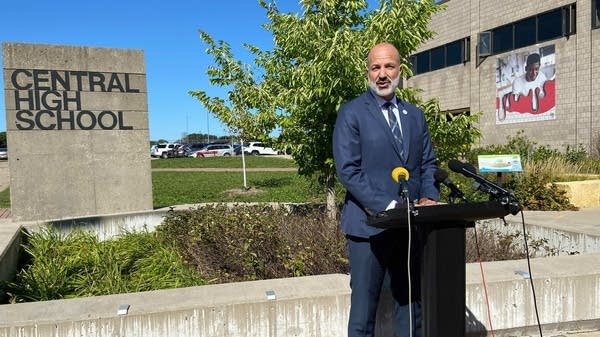Minneapolis, St. Paul differ in approach to school enrollment decline

St. Paul schools superintendent Joe Gothard at a press conference addressing school transportation shortages in September.
Tim Nelson | MPR News file
Go Deeper.
Create an account or log in to save stories.
Like this?
Thanks for liking this story! We have added it to a list of your favorite stories.


